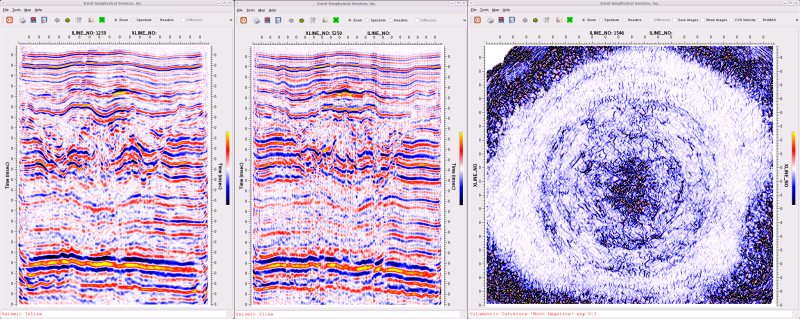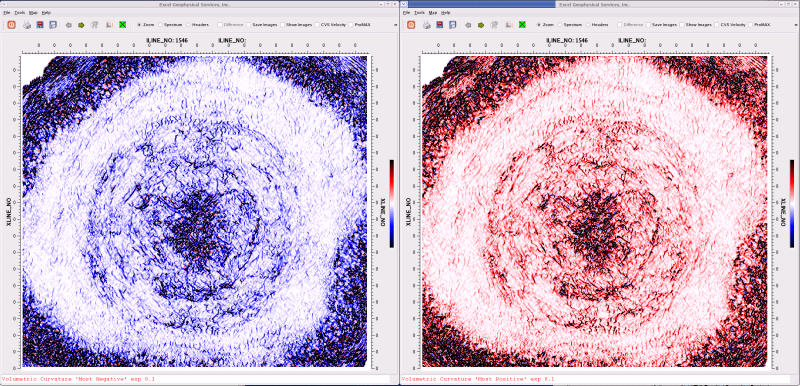Volumetric Curvature is a recent leading edge technology that can be used to map faults, fractures, folds, and stratigraphic features. By first estimating the volumetric dip and azimuth (Dip/Azimuth Semblance) for each sample, followed by curvature computation using adjacent dip and azimuth, a full 3D volume of curvature attributes is produced. There are many curvature attributes that can be computed but the most common are ‘Most Negative’ and ‘Most Positive’ since they tend to easily relate to geologic features.
A interesting feature of the tool is that long and short wavelength curvature estimates can be computed which enhance geologic features having different scales. Curvature images having different wavelengths provide changing perspectives of the same geology. Short wavelengths delineate details with intense localized fracture systems. Long wavelengths enhance regional flexure, broad bowls, and anticlines.
Volumetric Curvature attributes are valuable in mapping faults, fractures, and folds in deformed strata. In addition, stratigraphic features such as karst collapse, altered dolomites, and channels appear to be well defined on curvature displays.
All examples are courtesy of True Oil Company, LLC, Casper, Wyoming.

a) Seismic Inline, b) Seismic xline, c) Volumetric Curvature ‘Most Negative’ depth slice at 9500 ft.

Volumetric Curvature depth slice at 9000 feet, using a wavenumber exponent = 0.1,
a) Volumetric Curvature ‘Most Postiive’, b) ‘Most Negative’.

Volumetric Curvature on a horizon slice, using a wavenumber exponent=0.1,
a) ‘Most Positive’, b) ‘Most Negative’.
